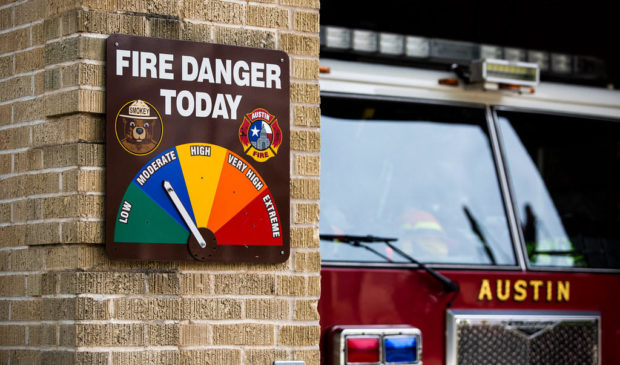Council members say audit on Austin’s ‘enormous’ wildfire risk doesn’t go far enough
Thursday, August 15, 2019 by
Andrew Weber, KUT Austin City Council members say they need a better look at where the city could be falling short in terms of its wildfire preparedness.
A report out today from the Office of the City Auditor said the city is doing enough to prepare for wildfires, but that Austin could do a better job of reducing the threat in areas largely outside the urban core.
Still, Council members on the Audit and Finance Committee said they wanted more from the audit if they’re going to fully prepare the city to tackle the threat.
The audit suggested the city adopt a years-long effort to enact requirements for fire-resistant materials on new construction and remodels of properties near potentially fire-prone brush and vegetation, over an area that’s roughly two-thirds of the city. The requirements, known as the Wildland-Urban Interface code, have been in the works since 2016, but the Austin Fire Department has yet to finalize them. The Fire Department is expected to present a draft to Council by December.
Some of those requirements could be folded into the city’s new Land Development Code, however, which Council expects to pass, at least preliminarily, by December. The audit suggested only that the city manager, and not the entire Council, be updated on the overlaps. Council members on the Audit and Finance Committee expressed concern about that.
Much of Wednesday’s discussion centered on how well the city is clearing public land as well as incentivizing property owners to clear their lands of brush.
The audit also pointed out the need for addressing city-owned land that is at risk of wildfire. Justice Jones, Austin Fire Department’s wildfire division manager, told the committee the department had narrowed down how much land it could feasibly clear of hazardous brush and vegetation, and that AFD had cleared only about 11 percent of that land.
Council Member Alison Alter, who requested the audit and whose district includes at-risk land, said the report didn’t comprehensively convey the level of risk to city-owned land near fire-prone vegetation.
“I’m trying to understand why that’s not included in this audit,” she said. “If we as a city are only already limited to public lands … if we’re only at 11 percent, we’re not going to get much further, because that brush comes back.”
City Auditor Corrie Stokes said because the audit focuses on multiple departments and entities – including the Parks and Recreation Department, Austin Water, AFD and Austin Resource Recovery – auditors wanted to simplify the report.
Alter said that while the report did highlight areas where the city could improve and where departments could work in tandem to reduce wildfire risk, it didn’t say whether the city was properly prepared.
“It doesn’t give me, as a policymaker, the information that I asked for to try to understand if we’re putting enough resources into this area, given the magnitude of this risk,” Alter said. “The report doesn’t even give us a sense of what the risk of wildfire is to our city – which is enormous.”
Alter and the Audit and Finance Committee asked the city auditor to go back to the drawing board to address concerns on how the city can better address brush collection on private land by Austin Resource Recovery and determine how liable Austin Energy would be in the event of a wildfire, among other concerns.
The auditor could come back with those suggestions as soon as October.
Currently, the city has banned fires and grilling on Austin parkland, though propane grills and stoves are allowed. Last week’s report from the U.S. Drought Monitor classified most of Travis County as abnormally dry. Nearly half the counties in Texas are under a burn ban right now, according to the Texas Forest Service – that includes Travis County and its bordering counties.
Download (PDF, 2.69MB)
This story was produced as part of the Austin Monitor’s reporting partnership with KUT. Photo by Montinique Monroe for KUT.
The Austin Monitor’s work is made possible by donations from the community. Though our reporting covers donors from time to time, we are careful to keep business and editorial efforts separate while maintaining transparency. A complete list of donors is available here, and our code of ethics is explained here.
You're a community leader
And we’re honored you look to us for serious, in-depth news. You know a strong community needs local and dedicated watchdog reporting. We’re here for you and that won’t change. Now will you take the powerful next step and support our nonprofit news organization?



